Americans have a love affair with eating, but the digestion part? That’s another story. More than 15 million Americans are plagued by heartburn daily (1). At least 55 million U.S. men, women and children live with irritable bowel syndrome (IBS) (2). As many as 7% of the population say they have excessive or bothersome belching, and 11% report frequent bloating (3).
The stats aren’t pretty, but they emphasize one thing: we need to take better care of our digestive health.
Stressed? Learn to Digest
Nerves before giving a presentation can help keep us on our game, but stress can also cause a not-so-helpful side effect: gastric discomfort. Unfortunately, many people aren’t just affected by occasional stress-induced stomach ailments. Due to a hectic lifestyle, poor food choices and lack of sleep, it is often a regular occurrence. Stress is even implicated in chronic gastric conditions such as IBS and ulcers, according to Anurag Pande, Ph.D., vice president of scientific affairs at Sabinsa Corporation, East Windsor, NJ.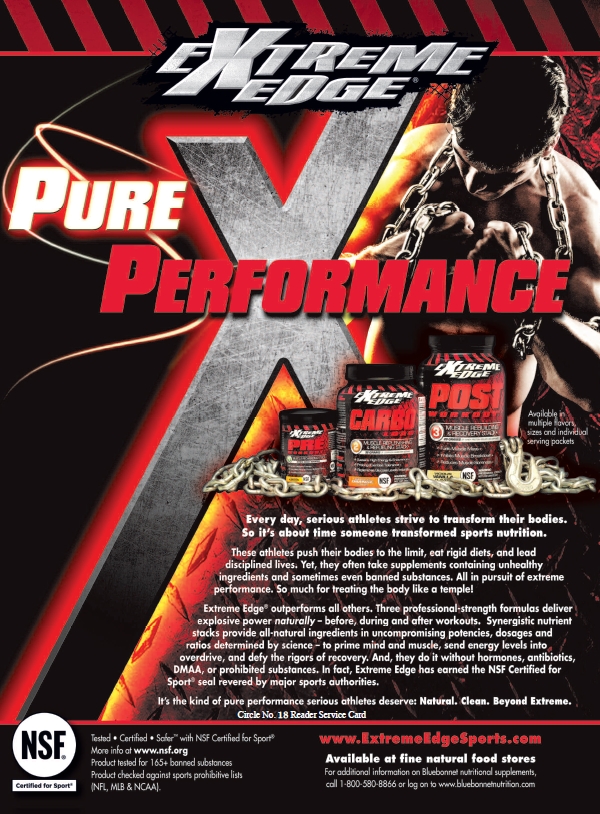
The gut is like a second brain. It is controlled by the enteric nervous system, which contains over 200 million neurons and vast stores of neurotransmitters, says Natalie Engelbart, DC, specialist in functional neurology and clinical nutrition. “In fact, about 95% of our body’s supply of serotonin is housed in our gut. So when neurotransmitter levels plummet due to chronic stress, our digestive system will inevitably be severely affected,” she says.
It is no shock then that stress is a big factor in poor digestion. “Stress tends to slow the digestive process, and even halts it completely as part of the fight or flight response when adrenaline is secreted,” says Christophe Merville, D.Pharm., director of education and pharmacy development at Boiron, Newtown Square, PA. “When food and acidic gastric juices stay too long in the stomach, they ferment, producing gas and increasing the chance for acid reflux. Gas also forms in the upper intestine and can cause painful cramps.”
Hormones released during stressful times also trigger pulse rate to accelerate, lack of appetite, heartburn, nausea and stomach pain. Jay Levy, director of sales at Wakunaga of America Co., Ltd., Mission Viejo, CA, explains that during stress, the central nervous system limits blood flow, which “affects the contractions of your digestive muscles and decreases the secretions needed for digestion.” This means that during chronic stress, the digestive tract is in a continuous state of upheaval, including interrupted enzyme production—a key component of healthy digestion, according to Levy.
Engelbart adds that stress doesn’t only breakdown digestive enzymes; it also depletes probiotic stores. In the end, stress could reduce nutrient assimilation, according to Marci Clow, M.S., R.D., senior director of product research at Rainbow Light Nutritional Systems, Santa Cruz, CA.
In addition, stress could be a drag on the immune system, making us more prone to illnesses. Thus, supporting healthy digestion is imperative. Putting everything into perspective is Trisha Sugarek MacDonald, B.S., M.S., director of research & development/national educator at Bluebonnet Nutrition Corporation, Sugar Land, TX, who says, “Digestion problems can lead to nutrient deficiencies, compromising cellular health/immune health, while issues surrounding the probiotic status can defer a negative impact on modulation of the immune system response. Together the issues can compound an already negative environment within the body.”
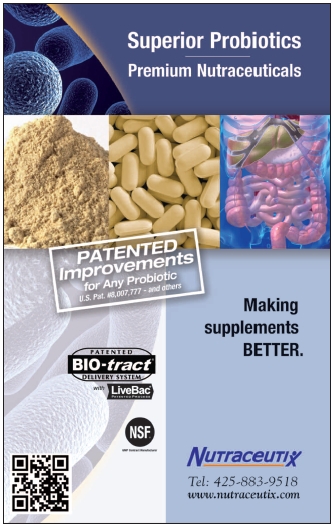 Experts say that numerous nutritional products can help the situation. For instance, Brenda Watson, president and founder of ReNew Life Formulas, Palm Harbor, FL, says, “Certain supplement ingredients can help offset the effects of stress on the GI tract such as soothing aloe, slippery elm and marshmallow. L-glutamine and N-acetyl D-glucosamine (NAG) are two key ingredients that help support a healthy intestinal lining to combat the effects of stress. Many health care professionals also now recommend supplementing with probiotics to help rebalance the gut bacteria population affected by stress.”
Experts say that numerous nutritional products can help the situation. For instance, Brenda Watson, president and founder of ReNew Life Formulas, Palm Harbor, FL, says, “Certain supplement ingredients can help offset the effects of stress on the GI tract such as soothing aloe, slippery elm and marshmallow. L-glutamine and N-acetyl D-glucosamine (NAG) are two key ingredients that help support a healthy intestinal lining to combat the effects of stress. Many health care professionals also now recommend supplementing with probiotics to help rebalance the gut bacteria population affected by stress.”
If your shoppers aren’t grasping the important connection between GI health, stress and overall well being, clue them in. Says Patrick Luchsinger, nutrition marketing manager with Ingredion, Westchester, IL, “Understanding stress and how it can affect you is a starting point to implementing things to help support your digestive system.”
Grandma Was Right!
Did Grandma ever give you a peppermint or chamomile tea to soothe an upset stomach? Well, she was on to something, as herbs are some of the most well-known and long-lived techniques for addressing everything from nausea to heartburn.
If shoppers are wondering if they really work, experts say the answer could be yes. Herbs have been widely researched for digestive health. For instance, Pande calls ginger “one of the most studied herbs for its GI tract benefits.”
Erin Stokes, N.D., director of education, MegaFood, Derry, NH, adds that the root has historical use for digestive complaints. She states, “It is a warming herb, rich in volatile oils, that is commonly used as a digestive aid for mild stomach upset.”
The mechanism of action, according to Pande, is that ginger helps to increase the stomach’s actions that move food through the intestines. The root also “prevents the accumulation of toxic substances, thereby blocking the gastro-intestinal reactions which often trigger nausea,” he states.
Ginger, Sugarek MacDonald states, has numerous components, including gingerols and shogaols that are formed when ginger is dried or cooked. It has been suggested that gingerols stop platelet aggregation and lessen inflammation by inhibiting the COX-2 enzyme and supporting optimal gastrointestinal health, she points out. “Ginger tea can be extremely effective for both dizziness and nausea. Ginger is known for relaxing the intestines,” Sugarek MacDonald explains.
Levy adds another layer: “Ginger stimulates the production of digestive juices and helps neutralize the stomach acids that cause cramping, nausea and diarrhea.”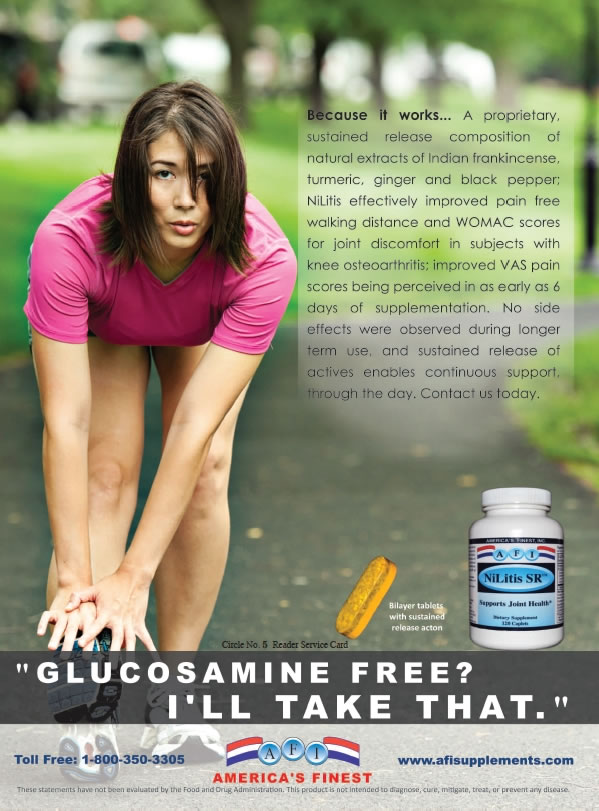
Given all the anecdotal and clinical support of ginger, Clow calls it the “go-to digestive herb,” noting that ginger was found in a meta-analysis to work better than a placebo in most cases (4).
Another old standby is peppermint because its menthol content acts like an anesthetic for the stomach, according to Sugarek MacDonald.
Peppermint is said to be helpful for IBS-related cramping, bloating and upset stomachs because it helps relax colon muscle spasms. According to Dallas Clouatre, Ph.D., consultant for R&D at Jarrow Formulas, Los Angeles, CA, enteric-coated peppermint oil capsules is one of the most effective delivery forms for this herb. Clow agrees, noting, “Several clinical trials have used enteric-coated peppermint oil in IBS or recurrent abdominal pain in children, with significant improvements reported.”
Chamomile works similarly in that it offers anti-spasmodic effects to aid numerous gastrointestinal conditions.
Other herbs can help, too. For instance, black pepper stimulates the taste buds and increases hydrochloric acid secretion, thereby preventing conditions like heartburn, diarrhea and constipation; fennel eases gas and bloating; and aged garlic extract, says Levy, “helps to stabilize the intestinal tract by reducing inflammation, eliminating pathogenic bacteria and cleansing the stomach and intestines.”
Inflammation support is also the reason why Clow feels turmeric is a good digestive aid. She says its antioxidant and liver-protective properties are similar to that of silymarin.
Before moving on, it should be noted that several homeopathic medicines also offer digestion support. One product (Acidil from Boiron) helps those with heartburn, acid indigestion or sour stomach. The formula targets excess acid build-up, which reduces stomach discomfort. “It relies on four of the most often used homeopathic medicines for these problems,” says Boiron, which are Abies nigra, Carbo vegetabilis, Nux vomica and Robinia pseudoacacia.
Bring Out the Big Guns: Probiotics
Market research firm MaCorr Research found in 2007 that 47% of 2,000 North American shoppers correctly said probiotics help “maintain the natural balance of organisms in the intestines.” In 2010, the percentage of correct responses jumped to 73%! Among those with digestive issues, the number was even higher: 82% (5).
 Despite this high level of awareness, retailers shouldn’t think their job is done in terms of talking to consumers about probiotics. Several other lessons can be learned.
Despite this high level of awareness, retailers shouldn’t think their job is done in terms of talking to consumers about probiotics. Several other lessons can be learned.
Prebiotics. The same survey found that few shoppers could correctly speak about prebiotics. Just 10% of 2010 participants knew that prebiotics feed healthy bacteria. Some 37% thought prebiotics restore healthy bacteria and 46% had no answer at all.
Given this lack of knowledge, Luchsinger offers some important points to stress with shoppers. “Prebiotic fibers can have a positive effect on the microbiota as seen in the recent study with Purimune high-purity galactooligosaccharides (GOS) ingredient. This study was the first demonstration of GOS efficacy to support the immune system in a stressed, adult population.”
For two months, 427 students either received a placebo or GOS (2.5 g or 5.0 g). Stress levels and cold/flu symptoms were recorded daily; GI responses were recorded weekly. In the end, GI symptoms were lower with GOS supplementation. A dose of 2.5 g of GOS was associated with lower flu symptom scores across all levels of stress; 5.0 g helped only at lower levels of stress. Those taking GOS had few days with cold or flu symptoms, too.
Refrigerated versus shelf stable. Several innovations have been made in the probiotics category of late, so it’s imperative that retailers understand them well enough to explain them.
For instance, we now have both refrigerated and shelf-stable probiotics. According to Watson, “Advances in probiotic strain stability, delivery method and packaging have made potent, multi-strain and shelf-stable probiotic supplements readily available for specific health concerns such as general digestive balance, colon support, and women’s urogenital and yeast balance concerns.”
Jack Grogan, certified nutritionist and chief science officer at Uckele Health & Nutrition, Blissfield, MI, explains how it all works. He says refrigeration is used to keep the bacteria dormant in a manner similar to hibernation. He states, “At cooler temperatures, the individual bacterium do not feed, metabolize, reproduce or compete with each other.” This is key because a probiotic’s efficacy depends on its lifespan and activity. If the species aren’t competing, they’re more likely to remain active over the long term.
On the other hand, Grogan says that probiotics kept at room temperature are often freeze-dried, “a common method that lengthens the shelf life because it removes moisture, thereby limiting the metabolism of the probiotic until it is consumed.”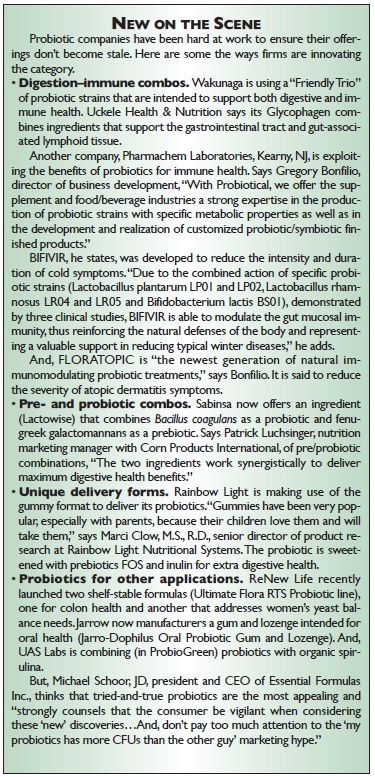
To this, Clouatre adds that shelf stability is created by carefully picking strains, choosing how they are grown, determining how they are placed into dormancy and then being cautious in their delivery. “It does no good to start with hardy strains placed deeply into dormancy and then placing these probiotics in capsules that allow easy penetration of moisture,” he states.
Formulators also take advantage of a bacteria’s inherent suitability for a given delivery method. For instance, Clouatre says Saccharomyces boulardii is hardy without refrigeration.
Adds Connie Falkenstein, R.D., M.S., M.PH., director of marketing at UAS Labs, Eden Prairie, MN, “Some strains are inherently more tolerant of temperature variation and can be kept at room temperature without significant loss, others are very sensitive and will start to die at temperatures above 75 degrees F.” She notes, however, that even shelf-stable probiotics should be kept out of high-heat situations like a car during the summer.
Other companies use spore-forming lactic acid bacteria (SFLAB). Pande says they do not require refrigeration and are room temperature stable. “Only certain strains are able to make these spores and have probiotic benefits. One of the widely studied and successful bacteria in the probiotic field is B. coagulans,” he states, adding, “Spore-forming bacteria remain in a dormant stage as long as they are in spore form and are more resistant to manufacturing or formulating stresses.” For more on ensuring stability, see sidebar “Stabilization Strategies”.
These are the technicalities behind probiotic delivery. But how do shoppers perceive the difference between refrigerated and shelf-stable probiotics? Falkenstein offers some interesting insight. “Most customers perceive probiotics in the refrigerated section as ‘premium’ probiotics and view them differently.” She says her company tells shoppers its probiotics are room temperature (70 degrees F) stable, but recommends refrigeration “as they are clearly premium probiotics.”
Others see the shelf-stable form as preferable for convenience’s sake. Notes Mike Bush, vice president of business development at Ganeden, Mayfield Heights, OH, “Shelf-stable products add a level of convenience to consumers that refrigerated products simply can’t offer.”
Michael Schoor, JD, president and CEO of Essential Formulas Inc., Farmers Branch, TX, agrees, noting shoppers traveling with refrigerated probiotics may try carrying them in a freeze pack or cooler, but this technique also exposes the product to moisture, “which is a no-no for probiotics. Shelf-stable probiotics, such as those that have each individual capsule packaged in a blister pack, eliminates the difficulty in traveling with probiotics.”
|
Probiotic Stabilization Strategies Stability is the name of the game with probiotics, and companies have developed some interesting techniques to make sure this happens. Meanwhile at ReNew Life, president and founder Brenda Watson says the company uses delayed-release capsules and double-foil blister packs to ensure freshness and stability. To make its shelf-stable products effective, Dr. Ohhira’s Probiotics ferments the organisms for three years at ambient temperatures. “This means that the probiotics, prebiotics, bacteriocins, enzymes, vitamins, minerals, amino acids, etc. developed during the fermentation process and contained in the finished product ‘live’ together and develop a ‘symbiotic’ or ‘friendly’ relationship with each other so the final product is biogenic or ‘living,’” says Michael Schoor, J.D., president and CEO. Adds Natalie Engelbart, DC, specialist in Functional Neurology and Clinical Nutrition, “The three-year fermentation process ensures only the strongest of the strongest survive and thrive, and these are the strains that stand the best chance of producing a positive clinical effect.” Other companies, like Rainbow Light Nutritional Systems, prefer using sporulated strains such as Bacillus Coagulans (aka. lactobacillus sporogenes). “This strain allows us to be able to claim full activity at the products date of expiration, without requiring refrigeration,” says Marci Clow, M.S., R.D., senior director of product research at Rainbow Light. |
But, retailers should know that considering refrigerated versus shelf-stable probiotics is more than just a matter of convenience. Angelica Vrablic, Ph.D., nutrition research manager at American Health, Ronkonkoma, NY, makes the point that refrigerated probiotics frequently incorporate just one strain, and often it is a temperature-sensitive variety. On the other hand, “Shelf-stable probiotic products usually contain more than one strain and these strains are documented to be stable,” she states.
The issue of offering multiple strains in one formula is important to some firms. States Grogan, “We feel very strongly that a probiotic product that delivers multiple strains of pre- and probiotics is preferable to single-strain products because each strain has a purpose. Each one thrives in a different part of the digestive tract and works in a different way. A quality probiotic supplement should include a wide array of friendly stands of bacteria, such as Lactobacillus acidophilus, Bifido longum, Strepococcus lactis, as well as the prebiotics mannanoligosaccharide and fructooligosaccharide (FOS).”
Tim Gamble, president and CEO of Nutraceutix, Redmond, WA, says you’re not likely to find a safe, researched natural lactobacillus and bifidobacteria strain as a shelf-stable formula. “There are strains and delivery formats that have better or worse shelf-life, but none have proven to be shelf-stable in the sense that they never degrade. This is, fundamentally, the reason why refrigeration for them is even a topic of discussion, and also why Nutraceutix has spent a good deal of its 25 years in the industry researching and developing better ways to produce strain-independent probiotic dietary supplements with superior shelf-life and enhanced delivery to the body,” he states.
Other companies may disagree, and feel lactobacillus and bifidobacteria can last without refrigeration, though most agree that this relies on smart formulating and packaging. Blister packaging of each capsule, for instance, can also offer extra protection by shielding it from external moisture and oxygen.
This issue of different strains for various formats is important. “Not all probiotic strains are effective for everyone,” says Armin Salmen, vice president of research & development and quality assurance at GoodBelly, Boulder, CO. So, a little experimentation may be in order, regardless of the product they choose. “Consumers may need to try different foods and drinks in order to find the strain that works best for them. There are also probiotic supplements available,” he states.
Overall, more than one interviewee for this piece commented that shoppers don’t have a clear understanding of probiotic quality and potency.
For instance, Levy says that shoppers should know that refrigerated probiotics are not necessarily more likely to retain their potency over time. Tests show, he states, that taking a probiotic from the fridge and opening it at room temperature creates a gradient that encourages moisture to form in the bottle. This effect accelerates degradation. Says Levy, “So, while consumers are hoping that their probiotic products are kept more stable being refrigerated, in fact it’s the opposite situation since moisture is the main enemy for all probiotics and repeatedly opening and closing the cold bottle at room temperature creates condensation in the bottle which destroys the good bacteria.”
With regard to understanding quality, Gamble feels that shoppers rely too heavily on marketing claims. “There are only a few true hallmarks of natural probiotic quality that consumers can count on, including products legitimately labeled to indicate the use of proven processes and/or technologies that heighten product quality and viability from manufacturing all the way through to the point of purchase,” he believes.
Bottom line: look for the facts on trusted brands and processing/delivery techniques.
|
Eat Well, Be Well, Says Steven Lamm, M.D. Author, physician and house doctor on ABC’s The View Steven Lamm, M.D., has a new book on the market with a powerful message: our gut is the key to overall good health. In No Guts, No Glory (Basic Health Publications, ISBN: 978-1-59120-304-9), Lamm describes a three-step plan for improving wellness. Step One in the Gut-Smart Eating Plan is to focus on nutrient-rich natural foods like vegetables and whole grains. “The nutrient value of the food and body’s ability to absorb those nutrients is the single greatest contributor to health and wellness. No matter what else you do, if you do not eat well, you cannot be well,” Lamm states. “There’s nothing you can do about it.” This organ is the most involved with the absorption of nutrients. Health isn’t just about what you eat; it’s also about what you absorb, he feels, noting, “The search for wellness needs to start in your gut.” Step Two is detoxification, but not the once-in-a-while variety. “We’re harboring stuff in our bodies that’s stuck in our fat cells. It’s stuck in the liver, which is probably contributing to why we aren’t feeling as well as we want to,” he states. Thus, detoxing can help us purge these elements and enhance liver efficiency. “It’s like changing the filter in our cars,” he says. Detoxification, in his mind, should be used as a jumping off point for healthy eating on a regular basis. Last is restoring gut function with supplemental enzymes and probiotics. “If we only ate raw, fresh foods, we probably wouldn’t need many digestive enzymes,” he believes. Since that isn’t the case, most people can benefit from supplemental enzymes to help break down foods for proper digestion. Plus, he says most of us become enzyme deficient over time. And, of course, using probiotics supplements will help maintain healthy digestion. |
Eat ‘em Up
Probiotic foods have a long history. States Vrablic, “In the past, all probiotic bacteria were ingested from fermented foods such as yogurt, kefir, pickles, cheese, etc. In fact, probiotic bacteria such as Lactobaccilli were first discovered in fermented dairy products.”
These and other foods are quite a capable delivery form. According to Alan Murray, CEO of GoodBelly, “Food safety regulations require pasteurization and other procedures during production to kill off potential pathogens. As a result, the ability to produce probiotic cultures in foods and beverages that stay alive has been a learning process.”
Today, there’s been an explosion of unique food products like probiotics in pizza crust, cookies and even coconut water. When selecting products for your store, be sure you’re choosing products that are not only interesting and unique, but also effective.
Gamble cautions that if food makers aren’t careful, their integrated probiotics aren’t going to do much. He states, “They’ll either be killed outright by heat and/or close association with other ingredients, or degrade rapidly due to moisture content.”
Watson agrees food companies must be vigilant when making probiotic foods. “An added issue with probiotic foods, beverages, and juices is that they may contain sugars, preservatives and additives that work against the beneficial effect of probiotics in the GI tract, and may affect probiotic stability during storage,” she states.
Bush of Ganeden agrees that probiotic stability and efficacy is a challenge. While adding probiotics to foods can be a great way to up their nutritional value, “The harsh manufacturing and storage conditions of some products prohibits the use of traditional probiotics such as lactobacillus and bifidobacterium, which are vulnerable to heat, pressure, shelf life variables and the acid and bile challenges of the digestive system.”
Salmen adds that probiotics are very delicate “and it can be challenging to create foods that allow the probiotics to survive. Each probiotic strain, regardless of what form it comes in, must be handled carefully and steps must be taken in order to maintain its effectiveness.” His company chose to use the patented strain, Lactobacillus plantarum299v (Lp299v) for its robustness and research support for healthy digestion.
Likewise, Ganeden has developed a unique technology to deal with the situation of sensitive probiotics. Its branded technology (GanedenBC30) is a spore-forming probiotic bacterium. This means that there’s a hardened structure inside the bacteria, which Bush equates to a seed. “This spore safeguards the cell’s genetic material from the heat and pressure of manufacturing processes, challenges of shelf life and the acid and bile it is exposed to during transit to the digestive system,” he states. “Once it is safely inside the small intestine, the spore is then able to germinate and colonize the gut.” The technology creates a probiotic that doesn’t require refrigeration and can be used in products with long shelf lives. It even stands up to both high and low temperatures.
One interesting product making use of this technology is Frozen Naked Pizza, which chose the Ganeden strain for a reason. “Its effectiveness depends on the strain. Frozen Naked Pizza uses Ganeden BC30 and not all strains are appropriate for freezing and baking our pizza,” states Anne Zilvitis, vice president of marketing at Frozen Naked LLC, Denver, CO.
“We also want the probiotic to get where it is effective—into the gut or the lower GI,” Zilvitis continues. “The pizza is a fun way to get your probiotics! Who doesn’t like pizza—why not make it do something for you and taste good!”
This delivery form for probiotics may seem unusual, but Zilvitis says it’s a hit with consumers. The firm originally started as a restaurant chain and now offers frozen pizza at retail. “We have had such a positive response to our take-out and delivery pizzas that we decided to expand our mission to reach more people through the grocer’s freezer. People love the way our pizza tastes and our mission—to promote healthier eating by transforming a favorite food so it tastes great and is a better nutrition choice.”
Juice as a probiotic delivery method has also been a challenge for companies, but GoodBelly has had success with its Lp299v strain, which is said to “survive and thrive in a juice format, while retaining its efficacy through the end of code when stored properly,” says Murray. The company has also innovated coconut water and oat milk drink formats, both without sugar.
Prebiotics are also making their way into foods, including Naked Pizza. Luchsinger speaks of his company’s branded prebiotics. “NutraFlora is very well tolerated, formulation friendly and easy to incorporate—it does not interfere with the organoleptic properties of foods,” he states. “Purimune is suitable for a large range of applications.”
Enzymes: Getting to the Root of the Problem
Be it dairy or fats, many shoppers know their problem foods. What they may not realize is that their enzyme secretion could be a problem—and that supplements can help.
“The major components of food are lipids, carbohydrate and proteins. For the digestion and subsequent absorption of food, these nutrients need to be broken down,” says Pande.
 Enzymes are found in raw foods (which we don’t eat enough of) and the body doesn’t always secrete enough enzymes for proper digestion. Plus, “There’s some belief that the toxins we ingest can cause injury and start to wipe-out some of the digestive enzymes. It’s a new theory that there is an enzyme compromise as a result of toxins,” says Steven Lamm, M.D., physician, house doctor on ABC’s The View and author of several titles including the newly released No Guts, No Glory (Basic Health Publications).
Enzymes are found in raw foods (which we don’t eat enough of) and the body doesn’t always secrete enough enzymes for proper digestion. Plus, “There’s some belief that the toxins we ingest can cause injury and start to wipe-out some of the digestive enzymes. It’s a new theory that there is an enzyme compromise as a result of toxins,” says Steven Lamm, M.D., physician, house doctor on ABC’s The View and author of several titles including the newly released No Guts, No Glory (Basic Health Publications).
Thus, shoppers will want to hear about enzyme supplementation, which “may allow for the pancreas to ‘recover’ some previous functions,” says Vrablic.
According to Rich Mihalik, director of innovation and product development at National Enzyme Company, Forsyth, MO, supplemental enzymes essentially pre-digest food. “This pre-digestion is similar in purpose to the pre-digestion that occurs in your mouth through chewing and the action of saliva. By pre-digesting the food, you are making it easier for the rest of the digestive system to extract the nutrients from the food,” he states.
Watson says various enzymes target specific food types by breaking down the bonds that hold foods together, which “makes their nutrients more readily available for energy and their waste products more efficiently expelled.” For instance, protease and papain break down proteins while lipase breaks down fat.
“An ideal enzyme supplement contains a wide variety of these types of plant-based enzymes to work well over the broad pH of the digestive tract,” she believes.
Enzymes have the benefit of being fast-acting. States Dave Barton, director of education at Enzymedica, Port Charlotte, FL, “The person with severe digestive distress will often experience a benefit the first time they try a high-quality digestive enzyme formula.”
But Sugarek MacDonald feels that an enzyme’s ability to work quickly could depend on the type used. “Plant enzymes like the ones used in Bluebonnet’s Vegetarian Optimum Enzymes Vcaps or Vegetarian Power-Zymes Vcaps, are quite stable in the stomach environment and go to work immediately once the Vcap is broken down (i.e., 20–30 minutes based on the standards set by the USP for disintegration and dissolution testing),” she states. “This gives the plant enzymes an edge on digestion over animal/pancreatic enzymes, since they work mainly in the small intestine.”
Clow adds that enzymes offer other benefits, once digestion is supported: “Energy levels are increased, elimination becomes regular, and improved immune benefits may be experienced due to the fact that much of our immune activity is generated in the gut.”
Clouatre highlights another not-well-known benefit of digestive enzymes: “What most people do not realize is that the body tends to conserve digestive enzymes. Long-term use of digestive enzymes can help increase the body’s own reserves of these enzymes for better digestion.”
Digestion and Beyond
Despite its claim to fame in the digestion and immune categories, enzyme innovation is also happening in other areas.
Weight loss, for instance, is one target area. Kim Barton, director of marketing at Enzymedica, Port Charlotte, FL, speaks of a new weight-management enzyme blend from her company (Glucoreductase). First off, it helps convert starches to soluble fiber. “This conversion of carbohydrates decreases the glycemic index of the foods consumed, helping maintain normal blood sugar levels and promotes healthy digestion,” states Barton. In addition, lipase helps with fat digestion. According to Barton, “A deficiency in the natural production of lipase may adversely affect the digestive system’s ability to properly use fat, impacting lipid metabolism and ultimately increasing fat storage.” The formula also incorporates superoxide dismutase (SOD) to help reduce oxidative stress associated with weight loss.
Another interesting angle for enzymes is energy, also being innovated at Enzymedica through its Enzyme Science line for health professionals. Dave Barton says the line’s digestive health products not only offer enzymes, but also a blend (of ATP, magnesium citrate, alpha lipoic acid and coenzyme Q10) that supports proper ATP production. He states, “Certain stressors such as age and exercise can diminish ATP levels. Supplementing with ATP and nutraceuticals that support ATP production, complement the body’s natural energy production, can decrease the energy demand of the digestive process, support nutrient absorption and improve HCl availability in the upper GI.”
National Enzyme Company, is focusing on oral support. To Mihalik, it’s a natural fit for enzymes. “The saliva glands in the mouth secrete several digestive and immune supporting enzymes…Dry mouth can cause a deficiency in these enzymes.” The firm markets a chewable tablet (Oral Refresh) with xylitol, lactoferrin, amylase, lysozyme and lactoperoxidase enzymes “to address these potential enzyme deficiencies with both natural and supplemental enzymes.”
Last, Clow says that bromelain is increasingly used to target inflammation. She explains that when capsules are taken with meals, they support protein digestion. When consumed on an empty stomach, bromelain offers anti-inflammatory properties. She states, “Bromelain has the unique ability to decrease the body’s chemical messengers responsible for inflammation (6, 7).”
Increasing Enzyme Visibility
Some market research indicates that enzymes (despite their effectiveness) aren’t growing as quickly in market share as other digestive aids like probiotics. This is likely due to lack of awareness, plain and simple.
“I always have to convince people that not only are the probiotics necessary, but so are the enzymes,” states Lamm.
Adds Vrablic, “[Consumers] may also be unaware that as we age, less digestive enzymes are produced and some such as lactase (for milk digestion) may no longer be made by the body. When consumers look for digestive health supplements, enzymes need to be part of the mix.”
Retailers can certainly do their part to increase the visibility of enzyme supplements. Clow says the first step is to offer shoppers trusted brands of enzyme supplements, especially those that do a good job of telling the enzyme story on labels. “Retailers can also encourage customers to have an open dialogue with their healthcare practitioner about the digestive supplements they take or have heard about,” she feels.
Clouatre advises that stores could explain the differences between enzymes and over-the-counter products with similar claims (without dissuading shoppers to forgo a doctor’s advice). For instance, proton pump inhibitors and enzymes may both benefit those experiencing heart burn and acid reflux. The former products are geared at reducing stomach acid needed for proper digestion, but enzymes have a different goal. Clouatre notes that “Proton pump inhibitors…can be relied upon to quickly make things tolerable, whereas the greatest benefits from enzymes come from improvements in digestion fundamentals and better nutrition, both of which come with sustained use.” Retailers can highlight this distinction.
Another tactic is to highlight new research on enzymes. Studies may be available from your favorite enzyme manufacturers and supplements. States Mihalik of National Enzyme Company, “We are working diligently to develop new research and assemble existing and emerging research on the benefits of enzyme supplements for our client companies. Through their marketing efforts, we intend to grow the awareness of these healthful products.”
Last, show the flexibility of using enzyme support, which now even come as chewable, spray and vegan-friendly formulas.
Stokes explains that enzymes can be used regularly or when special needs arise (such as digestive support during stressful times or when traveling). She states, “Digestive enzymes are helping optimize the nutritive potential of the foods we are eating.” WF
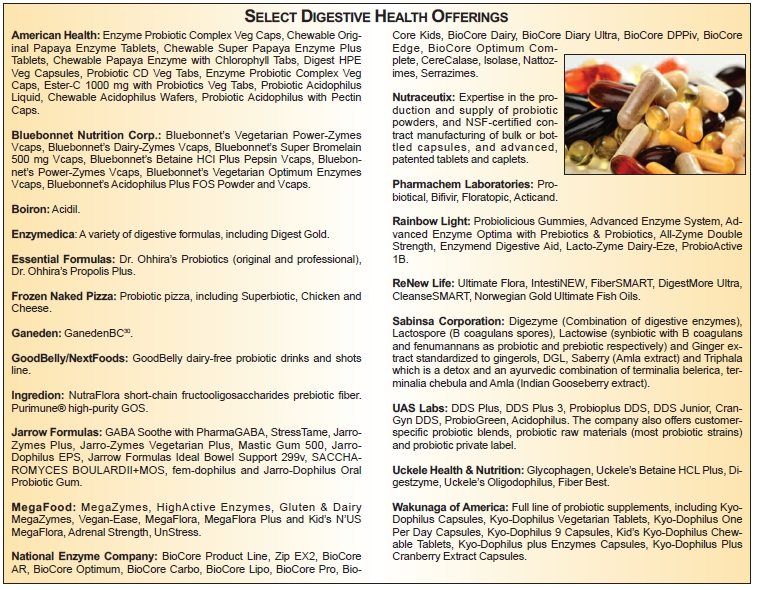
References
1. RightDiagnosis.com, “Prevalence and Incidence of Heartburn,” www.rightdiagnosis.com/h/heartburn/prevalence.htm, accessed May 25, 2012.
2. WebMD, “Irritable Bowel Syndrome,” www.webmd.com/ibs/default.htm, accessed May 25, 2012.
3. American College of Gastroenterology, “Belching, Bloating and Flatulence,” http://patients.gi.org/topics/belching-bloating-and-flatulence, accessed May 25, 2012.
4. Ernst and Pittler, “Efficacy of Ginger for Nausea and Vomiting: A Systematic Review of Randomized Clinical Trials,” Br. J. Anaesth. 84 (3), 367–371 (2000).
5. MaCorr Research, “Probiotics and Prebiotics Usage Awareness,” www.macorr.com/blog/?p=21, accessed May 24, 2012.
6. D.J. Fitzhugh, et al., “Bromelain Treatment Decreases Neutrophil Migration to Sites of Inflammation,” Clin. Immunol. 128(1), 66–74 (2008).
7. J.E. Onken, et al., “Bromelain Treatment Decreases Secretion of Pro-Inflammatory Cytokines and Chemokines by Colon Biopsies In Vitro,” Clin. Immunol. 126 (3), 345–352 (2008).
Published in WholeFoods Magazine, July 2012










